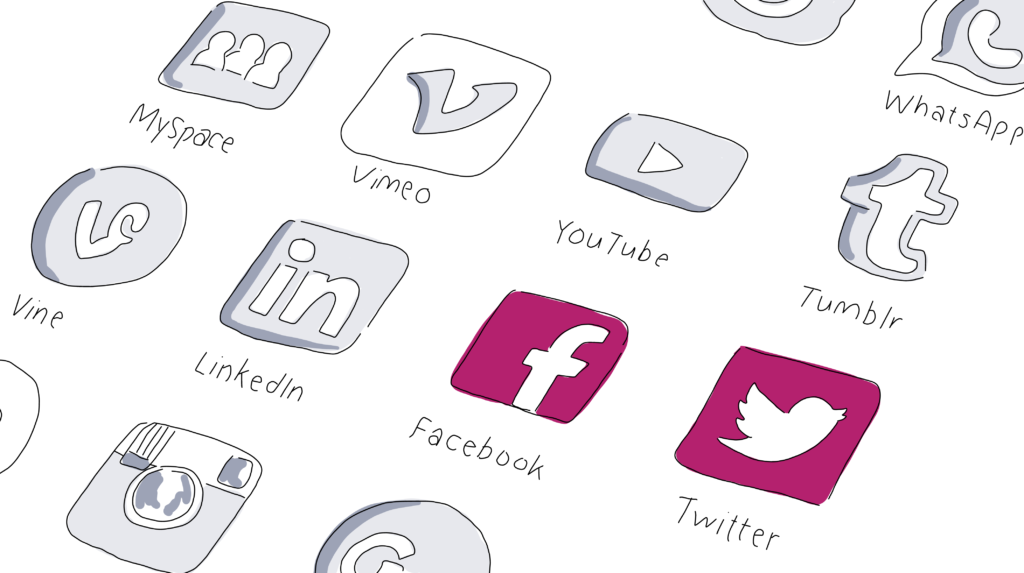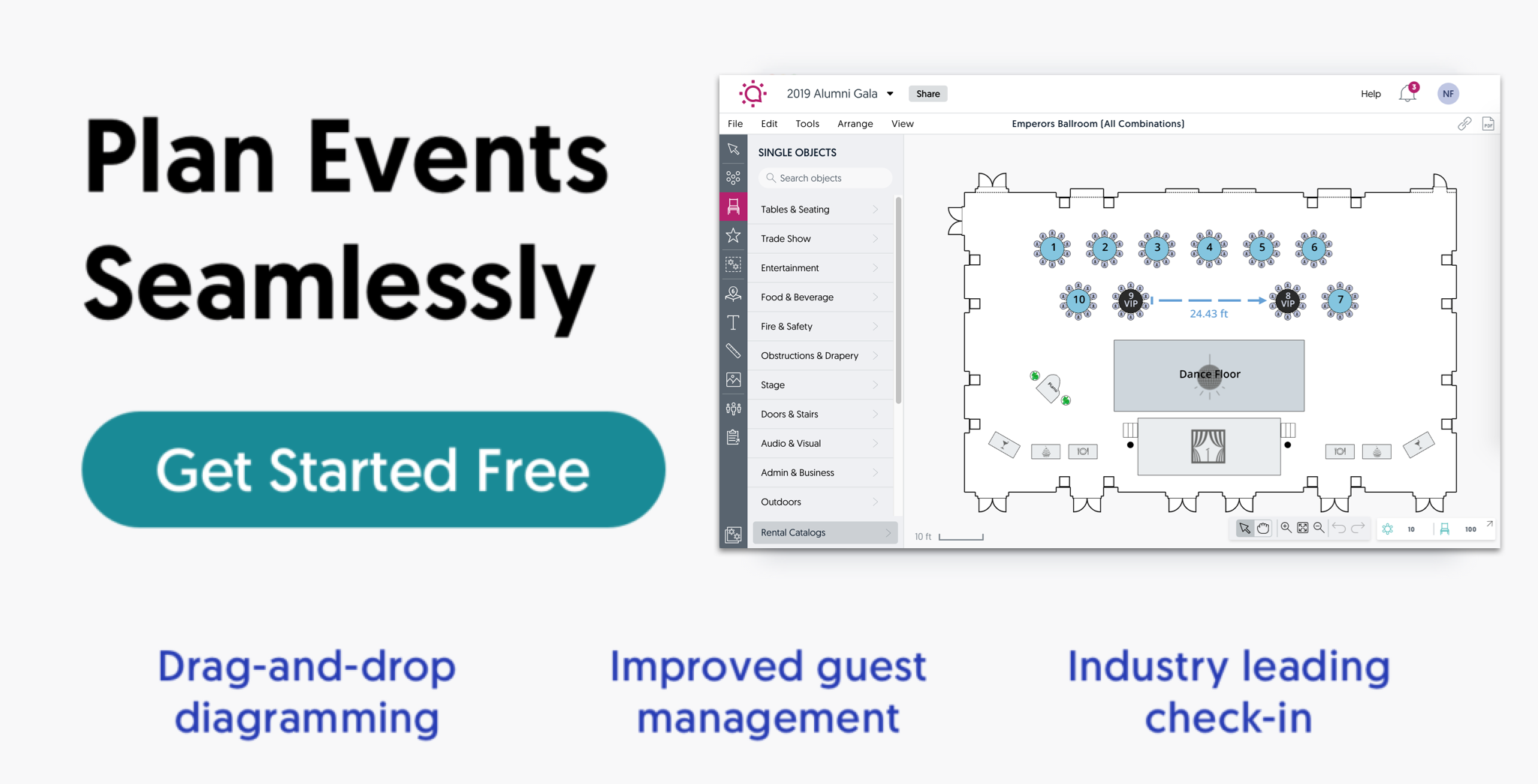
9 Event Marketing Plan Tips Every Planner Should Know
Even with the best of planning, an amazing event can miss your key objectives if you can’t get your target audience in the door. You’ve done the work to create a great event. You’ve followed your event planning checklist to a tee, ensured everyone will have a safe experience, and came up with some new and creative ways to wow your attendees. But what about your event marketing plan? How will you get the word out?
Below, we’ll cover the steps you need to take to create an effective marketing plan for your event that shares the right messaging with your audience and meets all of your event goals.
Explore 9 effective event marketing plan tips:
1. Set your event goals.
You can’t craft an effective event marketing plan if you don’t know what success looks like for you. What is the goal of this event? For example, if it’s a corporate event, you may be hoping to motivate employees, create excitement for a new product or initiative, or change customer perceptions.
Whatever your event goals are, make sure your marketing goals align with and support those objectives. Your event goals will determine the appropriate audience for the event, the actions you would like attendees to take, and how much press or social media coverage you’ll aim for. All of these things will have an effect on the way that you market your event.
2. Determine your unique value proposition.
Now that you know what you would like to get out of the event, it’s time to think about your attendees. What will they get by attending your event? Think about why your prospects would want to attend your event and shape your messaging around that.
Don’t just use your objective here and apply it to attendees. It’s easy to say, we want to sell more, so they want to buy. Tap into the pain points or problems that your attendees are experiencing and think about how the event will help them. Are you providing value in the form of useful information? Are you helping them learn something new? Will they make great connections that help them in their careers?
Write down your value proposition in a clear and concise statement. Something like, We’re holding this event so that attendees can connect with industry peers and learn about the latest technology. This statement will guide you as you start to put out messaging.
3. Define your audience.
As with any marketing plan, you’ll want to have a clear idea of the ideal target audience you’d like to reach. Who will gain the most from your event programming? What industries, roles, or types of businesses will feel that your event content is valuable? Come up with a few segments of customers, prospects, or industry stakeholders that you would like to reach.
Think about your event’s value proposition in order to find your target audience. For example, if your event is focused on helping people take their real estate business to the next level, you’re looking for realtors at a certain level or with a certain business size. Use your event content to shape the perfect audience, and then be as specific as possible about why those people need your event.
Additionally, create a shortlist of demographic data like age, education level, gender, occupation, and income level based on your perfect audience, and go from there.
4. Create a marketing timeline.
Your event timeline will vary based on a variety of factors ” the most prominent being size. But no matter what, it’s crucial that you have enough time to reach out to potential attendees multiple times without your messaging becoming overwhelming. Your marketing timeline should include how often you’ll market on each channel, as well as how often you’ll ask those who have already registered to share the event with friends and colleagues.
For larger events, like conferences and multi-day trade shows, your marketing timeline will need to be much longer than smaller, single-day events. Events requiring travel or hotel reservations can be marketed up to a year in advance, with at least three months lead time as an absolute minimum.
Larger events sometimes require smaller lead-up events to get participants interested and excited in the main event. These can include webinars on event topics, Q+A sessions with event speakers, in-person or virtual information sessions, and giveaways or sweepstakes. All of these smaller events should appear within your larger marketing plan and have their own simple outreach plans.
5. Decide on your communication strategy.
Think about which audience segments you want this event to serve and what the value proposition is for each segment so that you can target them properly. Then choose a few channels where you’re likely to reach target attendees.
Craft your messaging and content to fit the channels you’re communicating on, as well as the people you would like to reach. For instance, LinkedIn events are a great way to reach a specific professional audience with informative content. Instagram is perfect for sharing highly-engaging visuals related to your event. TikTok can be used to promote early ticket releases or other exclusive offers to a younger audience. Whatever channel you use, make sure you choose content that works well on that channel and targets the audiences that typically use that network.
6. Craft your landing page.
Your event website or landing page is the face of your event before attendees arrive. It’s where many prospective attendees make a choice about whether or not they’ll consider attending the event. For that reason, it’s a very important piece of your overall event marketing plan, and the design ” and user experience ” should reflect that.
Make sure to match the visual experience to the event and company brands so that attendees feel like they’re getting a cohesive experience. Your design should be simple, streamlined, and feature an easy-to-locate call-to-action. Use white space and engaging visuals to guide the eyes of your potential attendees and help them focus on the content that’s most important.
Don’t forget that many users will be visiting your site on a mobile device. Content that is easily scanned, like short paragraphs and bulleted lists, will help your reader to engage, even on a smaller screen.
7. Automate your outreach.
If you have the email addresses of potential attendees (you should!), create an automated email marketing campaign to share useful event information, communicate the value of the event to potential attendees, and get them excited about signing up. Don’t use these emails to sell to your audience. Instead, think of them as a way to share interesting content that displays the value proposition for your target audience. Behind-the-scenes content, event visuals from previous years, short video clips, and interviews with event speakers are all great ideas to get your audience excited about everything they’ll experience at your event.
By automating the outreach process, you can ensure that you’re sending relevant messaging to each audience segment and that you’re responding appropriately to their interests.
8. Make use of creative marketing ideas.
You may want to include some out-of-the-box marketing ideas to really make your event shine for potential attendees. Influencer marketing, behind-the-scenes content related to the event, live-streaming of pre-event happenings, and podcast episodes with more background on the topics or speakers are all fun ways to build anticipation for the event.
Another popular trend is digital gift bags, where event attendees receive ebooks, music, product coupon codes, exclusive video content and more as a reward for signing up. These gift bags work well for in-person or virtual events, and are loved by attendees and sponsors alike (since sponsors can better track attendee engagement with these freebies). If you are including a digital gift bag, make sure to talk about all of the valuable rewards as part of your marketing outreach.
9. Don’t forget to follow up.
Holding a great event is one thing, but to make sure that your event stands out as memorable to your attendees, you’ll need a well-crafted follow-up plan. Think about ways you can help attendees remember exciting parts of the event, reflect on things they learned, and take follow-up actions. Event wrap-up blog posts, bonus materials from speakers, and videos and photos of the event are all great things to share in the days and weeks after your event finishes. Continue your automated outreach for about a week after the event, and make sure to outline any follow-up actions that you would like attendees to take, such as sharing pictures on social media or signing up for a future event.
With these event marketing plan tips, you’re one step closer to creating a winning event.
Once you’ve crafted your event marketing plan, make sure to share it with anyone involved in the planning or marketing of the event. You’ll want everyone to be on the same page, and other team members may have important information on event attendees, speakers, logistics, or announcements that they would like to include in the promotional materials.
Need some inspiration to bring your event marketing to the next level? Check out these amazing event marketing examples.


